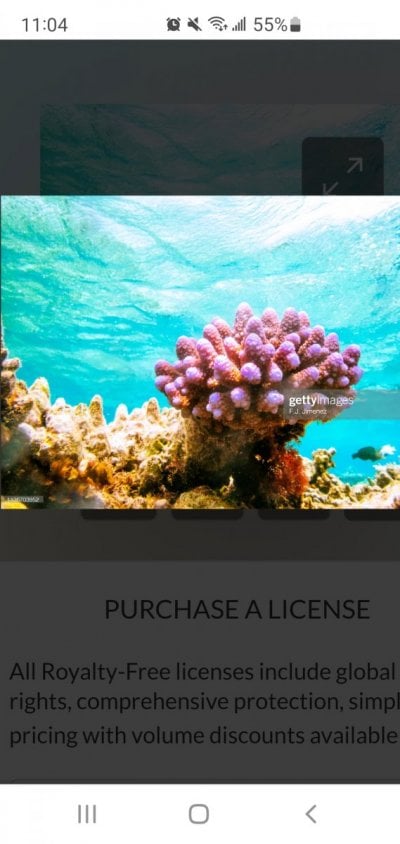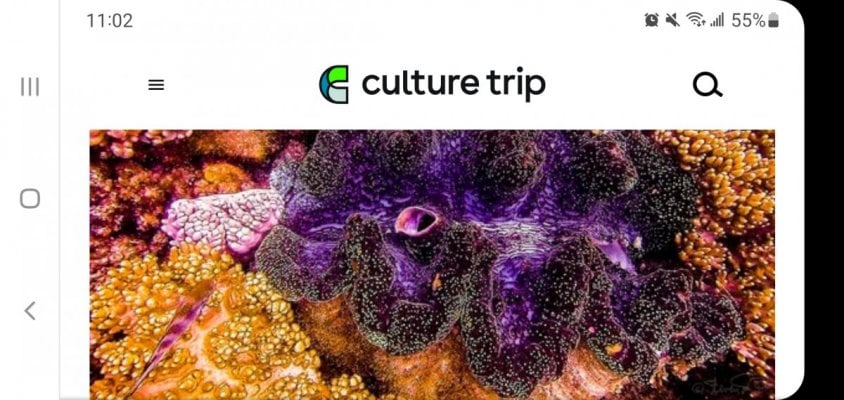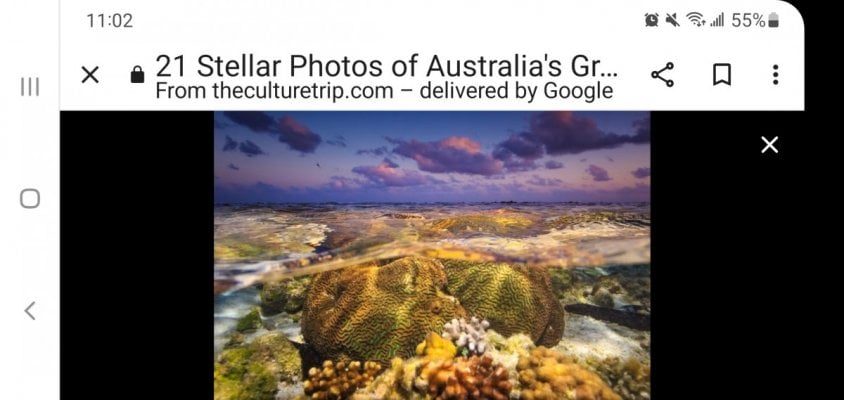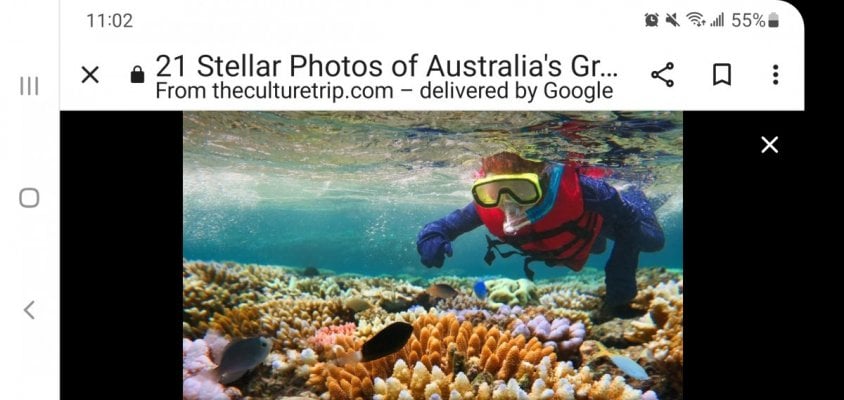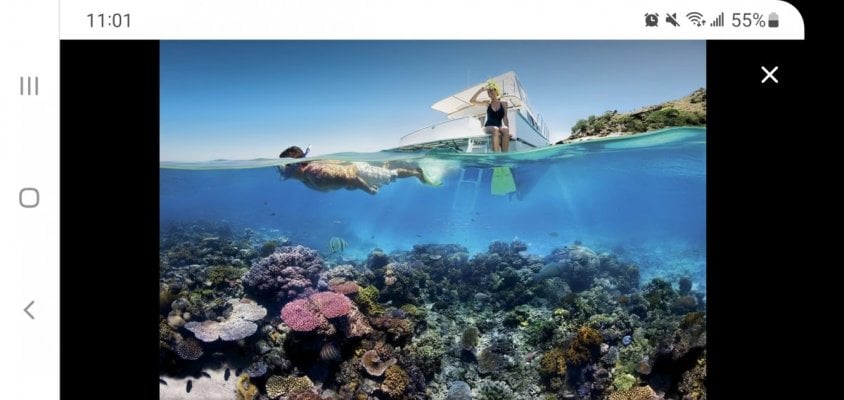The proper light for the reef aquarium is of extraordinary importance, not only for coral growth and health, but for the overall functioning of the food web. A large number of organisms involved in nutrient recycling, feeding corals and invertebrates, depend on light for survival. Photosynthetic bacteria, photo-autotrophic protists, cyanobacteria, diatoms, phytoplankton, zooxanthellae and algae perform photosynthesis to feed and build their tissues. To understand how corals take advantage of light, it is important to know that, for biological purposes, there is no difference between the light emitted by a HQI bulb, a T5 fluorescent tube or a LED fixture. In all cases it is a photon flux, which is used by zooxanthellae to perform photosynthesis, providing food to the coral.
Figure 1 shows the irradiance pattern according to time of day and sun elevation on an Australian coral reef. Phases of dawn, day and dusk are depicted. This universal pattern is the one that should follow, as far as possible, the luminous intensity that falls on a reef aquarium, for which it is necessary that the lights are dimmable.
Figure 1. Solar Irradiance over an Australian Coral Reef.
Depending on its location on the coral reef or in the aquaculture farm, a coral will be adapted to certain lighting conditions and water movement. In the ocean, depth determines the amount and type of light that strikes the zooxanthellae. This light is subject to very small variations. Variations are determined by the time of day, movement of clouds, water turbidity or sea swell intensity. Corals, anemones and giant clams respond very poorly to sudden increases in light intensity, so light acclimation is necessary before placing them in their final spot within the aquarium.
Throughout the day, there are specific moments where light intensity fluctuates rapidly, producing peaks and valleys of short duration (figure 1). These episodes are due to cloud movements and changes in atmospheric and meteorological conditions, being beneficial because they help corals and invertebrates harboring zooxanthellae to reduce their oxidative stress. As a result of exposure to intense light, photosynthetic activity of zooxanthellae leads to the production of large amount of superoxide radicals. These are highly toxic and can cause irreversible damage to the coral if not neutralized by specific metabolic reactions. The enzyme superoxide dismutase is involved in these reactions, where the toxic radicals are transformed into oxygen. These short periods of decreased light intensity can be easily simulated in modern reef aquarium lighting systems.
Corals located near the water surface receive a large amount of solar radiation so are forced to reduce their zooxanthellae population to reduce oxidative stress. This reduction results in a much lighter coloration. However, corals in deep zones, in order to maintain the same photosynthesis rate, must develop a higher density of zooxanthellae, presenting much darker shades. Another factor that significantly affects the coloration of corals, anemones and giant clams are the protective pigments they develop in response to UV and intense light radiation. These pigments provide them with very attractive colors, in shades of blue, mauve, yellow or pink, and their function is to reduce oxidative stress. In the reef aquarium, intense lighting, within reasonable limits, favors the formation of these pigments and the corresponding associated colors. These colors are a natural response and are consolidated when environmental conditions are extraordinarily stable. Frequent changes in the location of corals into a reef tank greatly limit the development of these pigment.
Light is an electromagnetic radiation that has the same nature as radio or cell phone signals. The only difference between them is their wavelengths. Each type of electromagnetic radiation is characterized by a different wavelength. For example, the radiation from a domestic WIFI router has a wavelength of approximately 12 cm. The human eye is not able to detect this wavelength, so WIFI radio waves are invisible to us. The energy carried by a light source is inversely proportional to its wavelength, i.e., the longer the wavelength the lower the energy.
If an electromagnetic radiation has a wavelength between 400 nm and 700 nm (1 nm being one millionth of a millimeter), it is perceived by the human eye in the form of light and colors. Each color corresponds to exactly one wavelength. This electromagnetic spectral range is known as the “visible spectrum”. Light from the sun carries all the wavelengths of the visible spectrum and additionally those corresponding to infrared and ultraviolet. Ultraviolet radiation is located before 400 nm and infrared radiation after 700 nm, i.e., at the borders of the visible spectrum above and below. The approximate equivalences between wavelengths and colors are described in table 1.
Throughout the day, there are specific moments where light intensity fluctuates rapidly, producing peaks and valleys of short duration (figure 1). These episodes are due to cloud movements and changes in atmospheric and meteorological conditions, being beneficial because they help corals and invertebrates harboring zooxanthellae to reduce their oxidative stress. As a result of exposure to intense light, photosynthetic activity of zooxanthellae leads to the production of large amount of superoxide radicals. These are highly toxic and can cause irreversible damage to the coral if not neutralized by specific metabolic reactions. The enzyme superoxide dismutase is involved in these reactions, where the toxic radicals are transformed into oxygen. These short periods of decreased light intensity can be easily simulated in modern reef aquarium lighting systems.
Corals located near the water surface receive a large amount of solar radiation so are forced to reduce their zooxanthellae population to reduce oxidative stress. This reduction results in a much lighter coloration. However, corals in deep zones, in order to maintain the same photosynthesis rate, must develop a higher density of zooxanthellae, presenting much darker shades. Another factor that significantly affects the coloration of corals, anemones and giant clams are the protective pigments they develop in response to UV and intense light radiation. These pigments provide them with very attractive colors, in shades of blue, mauve, yellow or pink, and their function is to reduce oxidative stress. In the reef aquarium, intense lighting, within reasonable limits, favors the formation of these pigments and the corresponding associated colors. These colors are a natural response and are consolidated when environmental conditions are extraordinarily stable. Frequent changes in the location of corals into a reef tank greatly limit the development of these pigment.
Light is an electromagnetic radiation that has the same nature as radio or cell phone signals. The only difference between them is their wavelengths. Each type of electromagnetic radiation is characterized by a different wavelength. For example, the radiation from a domestic WIFI router has a wavelength of approximately 12 cm. The human eye is not able to detect this wavelength, so WIFI radio waves are invisible to us. The energy carried by a light source is inversely proportional to its wavelength, i.e., the longer the wavelength the lower the energy.
If an electromagnetic radiation has a wavelength between 400 nm and 700 nm (1 nm being one millionth of a millimeter), it is perceived by the human eye in the form of light and colors. Each color corresponds to exactly one wavelength. This electromagnetic spectral range is known as the “visible spectrum”. Light from the sun carries all the wavelengths of the visible spectrum and additionally those corresponding to infrared and ultraviolet. Ultraviolet radiation is located before 400 nm and infrared radiation after 700 nm, i.e., at the borders of the visible spectrum above and below. The approximate equivalences between wavelengths and colors are described in table 1.
Table 1. Equivalence between wavelengths and colors
Figure 2 shows a plot of the spectrum corresponding to the average solar radiation incident on the ocean surface of a coral reef, at the hours of maximum illumination, which correspond with the closest position of the solar disk at noon. The data used to construct this plot were generated by the software WASI (“water color simulator”), a windows-based program developed for modeling and analyzing optical in situ measurements in aquatic environments.
Figure 2. Solar radiation incident on the ocean surface of a coral reef
Ultraviolet radiation is extraordinarily harmful to any organism and is filtered by the ozone layer that exists around the Earth. Ultraviolet-B and specially UV-C light radiation are very harmful to fish, coral and invertebrates. However, UV-A light is not destructive and, in fact, it is used by LEDs lights in reef aquariums to produce fluorescence on the corals. The light channels labeled as UV emit actinic light along with a small amount of ultraviolet-A light, generating this effect. Infrared radiation is emitted by all bodies in nature, depending on their temperature, and is harmless at low intensities.
As a result of the interaction of light with water molecules and dissolved substances such as phytoplankton, zooplankton, detritus and organic matter, there is an attenuation in intensity and a spectrum change. The change is produced because attenuation is selective with wavelength, affecting more to the colors close to red and yellow. This phenomenon is shown in figure 3, where it is verified that the red, orange and yellow wavelengths suffer a greater attenuation than the blue and violet tones, with the green color remaining in an intermediate place. As a result, as the depth increases, the available light becomes bluer and less red.
The spectrum of sunlight incident on the fish, corals and invertebrates submerged in the coral reef would be the result of "multiplying" the figures 2 and 3. This spectrum is represented in the figure 4 and corresponds to the existing light at about 5 meters depth. This would be type of light to replicate on a reef tank, however, there are other important considerations that make this spectrum less than optimal for aquarium lighting.
As a result of the interaction of light with water molecules and dissolved substances such as phytoplankton, zooplankton, detritus and organic matter, there is an attenuation in intensity and a spectrum change. The change is produced because attenuation is selective with wavelength, affecting more to the colors close to red and yellow. This phenomenon is shown in figure 3, where it is verified that the red, orange and yellow wavelengths suffer a greater attenuation than the blue and violet tones, with the green color remaining in an intermediate place. As a result, as the depth increases, the available light becomes bluer and less red.
The spectrum of sunlight incident on the fish, corals and invertebrates submerged in the coral reef would be the result of "multiplying" the figures 2 and 3. This spectrum is represented in the figure 4 and corresponds to the existing light at about 5 meters depth. This would be type of light to replicate on a reef tank, however, there are other important considerations that make this spectrum less than optimal for aquarium lighting.
Figure 3. Attenuation produced by seawater according to light wavelengths.
Figure 4. Spectrum of light existing at about 5 m depth in a coral reef.
First of all, zooxanthellae do not use all colors equally for photosynthesis. For solar radiation to be transformed into available energy for photosynthesis, it is necessary for organisms to possess certain absorption pigments. These pigments would be a kind of “organic photoelectric cells”, i.e., molecular structures that absorb certain wavelengths, converting light energy into chemical energy. The most abundant absorption pigment among photosynthetic organisms is chlorophyll, present within zooxanthellae in the A, B and C forms. Zooxanthellae also possess carotenoid absorption pigments, such as beta-carotene, peridinin and diadinoxanthin. The absorption response for all these pigments is very high in the violet/blue (400-500nm) and red (650-700 nm) range, ensuring that all available light on the reef is utilized. In figure 5 we can verify that the range between 550 nm and 650 nm (green and yellow colors) is of rather little importance for the metabolism of these symbiont algae. Therefore, in our aquarium lighting system, we can greatly attenuate the green and yellow colors without significant impact on the biology of corals, clams and invertebrates harboring zooxanthellae.
Figure 5. Absorption response for photosynthetic pigments.
Secondly, there is considerable scientific evidence of the detrimental effects of intense red-light radiation on corals (R.A. Kinzie & T. Hunter 1987). Intense red light frequently produces photosynthetic photoinhibition reactions in zooxanthellae, triggering their expulsion by the coral host and subsequent death. It has also been verified in laboratory studies with corals that blue light produces higher photosynthesis rates, zooxanthellae density, chlorophyl content and overall growth, than red light.
The type of light depicted in figure 4 has everything biologically necessary for the health of fish, corals, invertebrates and the associated food web of a reef aquarium. However, es explained, we can optimize this spectrum attenuating greens, yellows, oranges and reds, without any detrimental effect on fish, corals and invertebrate’s health. The attenuation of wavelengths near to red, not only protects our corals from oxidative stress, but also minimizes the probability of occurrence of unwanted algae. In tide pools, close to the reef, the light received has a large amount of red color, which is used by hair and macro algae for colonization and growth. The same thing can happen in the aquarium if a lot of red-light radiation is used.
Figure 6 shows what the reference light spectrum would look like for reef tank application. HQI bulbs, fluorescent tubes and commercially available LEDs fixtures are designed to provide this spectrum to a greater or lesser extent, with slight modifications. Taking this spectrum as a baseline, if we wish to recreate shallow areas or even intertidal pools, it is recommended to increase the content of green, yellow and red colors. In the case of recreating deeper areas, we can attenuate the greens, yellows and reds as much as necessary, without limiting the health or growth of the corals, giant clams and invertebrates.
The type of light depicted in figure 4 has everything biologically necessary for the health of fish, corals, invertebrates and the associated food web of a reef aquarium. However, es explained, we can optimize this spectrum attenuating greens, yellows, oranges and reds, without any detrimental effect on fish, corals and invertebrate’s health. The attenuation of wavelengths near to red, not only protects our corals from oxidative stress, but also minimizes the probability of occurrence of unwanted algae. In tide pools, close to the reef, the light received has a large amount of red color, which is used by hair and macro algae for colonization and growth. The same thing can happen in the aquarium if a lot of red-light radiation is used.
Figure 6 shows what the reference light spectrum would look like for reef tank application. HQI bulbs, fluorescent tubes and commercially available LEDs fixtures are designed to provide this spectrum to a greater or lesser extent, with slight modifications. Taking this spectrum as a baseline, if we wish to recreate shallow areas or even intertidal pools, it is recommended to increase the content of green, yellow and red colors. In the case of recreating deeper areas, we can attenuate the greens, yellows and reds as much as necessary, without limiting the health or growth of the corals, giant clams and invertebrates.
Figure 6. Reference light spectrum for a reef tank.
As an example, figures 7 to 10 show the spectrum provided by the manufacturer Giesemann in four HQI bulb models, together with their corresponding color temperature. We verify that the color temperature increases with blue light content, decreasing when there is a greater amount of red and yellow components.
Figure 7. HQI Geisemann Megachrome Marine. 12.000 ºK. With "rippling sun reflection effect”. There are a lot of red and yellow components.
Figure 8. HQI Geisemann Megachrome Coral. 14.500 ºK. “Natural sunlight effect”. By decreasing the amount of red components, the color temperature increases.
Figure 9. HQI Geisemann Megachrome Crystal. 17.500 ºK. “Great growth in SPS and LPS corals effect”. The decrease in yellow components increases the color temperature.
Figure 10. Geisemann Megachrome Blue. 22,000 °K. “Accentuates the blue components effect”. There is a significant decrease in the red, yellow and green components, producing a blue-dominant light with high color temperature.
In figure 11 the spectrum provided by a Ecotech Radion XR30w G5 LED is also depicted. We can see that the spectrum is similar to the one in figure 6, which is the reference spectrum, as explained.
Figure 11. Spectrum provided by Ecotech XR30w G5 PRO LED fixture.
Concluding.
When an aquarist wonders what type of light is appropriate for a reef aquarium, the immediate tendency is to mimic as closely as possible the natural light that fish, corals and invertebrates receive in nature. The spectrum of this light includes many of the colors that the human eye is capable of perceiving, for example violets, blues, greens, yellows, oranges and reds. However, zooxanthellae do not use all of these wavelengths equally, but mainly colors close to blue and red. It is therefore possible to decrease the intensity of colors close to green, yellow and orange, without having a negative impact on their health. On the other hand, we know that intense red light causes great oxidative stress in corals and additionally, favors the appearance of unwanted algae in the aquarium. Also, blue light produces in corals a higher rate of photosynthesis and a higher density of zooxanthellae than red light. The optimal spectrum for a reef aquarium therefore has a large amount of blue light, with other colors such as green, yellow, orange and red, significantly attenuated with respect to the natural light. This type of spectrum is the one implemented by modern lightning system for reef tanks.
This thread is for the general discussion of the Article The Optimal Light Spectrum in a Reef Aquarium. Please add to the discussion here.
Last edited by a moderator:






